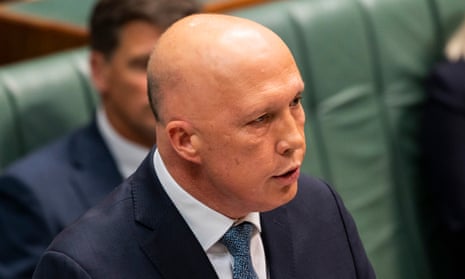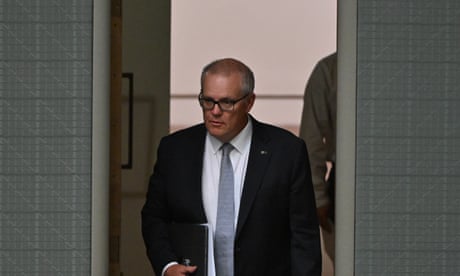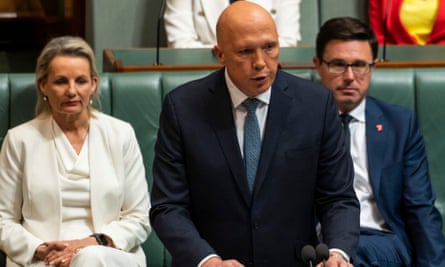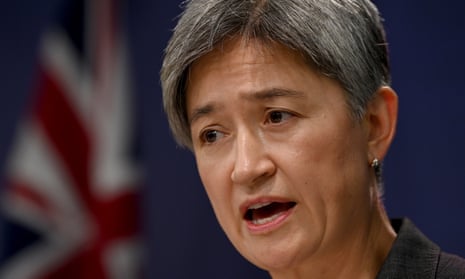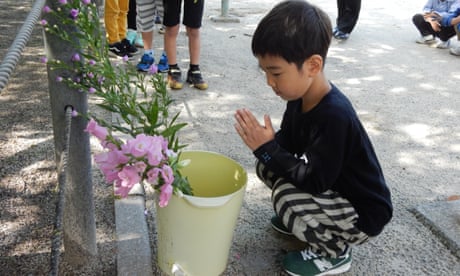Extract from ABC News
Tetiana Boikiv peered from the doorway of the cellar at the Russian soldiers questioning her husband about his phone.
Her husband Mykola Moroz — known as Kolia to his friends — called out to her.
"Come up. Don't be afraid," he said.
Kolia was trying to explain that the surveillance video they'd found was from his job as an electrician, all taken before the February invasion.
"I am a religious person," Kolia said.
"I haven't hurt anyone."
But the two soldiers and their commander did not listen. They put a bag over his head.
Despairing, Trina demanded to know what they would do with the man she called her big, big love.
"Shoot him," one of the soldiers replied. They took him away and Trina would never see Kolia again.
While atrocities in the nearby town of Bucha have captured the world's attention and become case number one for Ukraine's prosecutors, the slaughter there was not an aberration.
It was part of a trail of violence that spread far and wide, often under the radar of prosecutors, to ordinary villages like Zdvyzhivka, a half hour north of Bucha.
Much of the violence was systemic, not random, conceived and implemented within the command structures of the Russian military, an investigation by The Associated Press and the PBS series Frontline found.
Troops were instructed to block and destroy vestiges of "nationalist resistance", according to Russian battle plans obtained by the Royal United Services Institute, a prominent defence and security think tank in London.
They did so with consistent brutality, hunting potential enemies on Russian intelligence lists and torturing and killing volunteer fighters, veterans and civilians suspected of assisting Ukrainian troops.
The AP and Frontline interviewed dozens of witnesses and survivors and reviewed audio intercepts and surveillance camera footage to document what happened.
These cleansing operations — zachistka, in Russian — took on a sharper edge as the line between civilians and combatants blurred.
Ukraine has made it easy for anyone with a mobile phone connection to report the position of Russian troops, and many civilians do.
As Russian soldiers fought to suppress what has effectively become a crowdsourced resistance, they have swept up many civilians who have done nothing at all.
Ukrainian prosecutors have said they will address every crime committed in this war, but they are scrambling to triage more than 40,000 war crimes investigations.
Currently, their most pressing priorities are cases with promising evidence and high body counts.
Kolia would die in a garden not far away, possibly at the hands of troops commanded by the same man who led the Bucha operation, but his death has gone largely unnoticed.
That left Trina on her own to find her missing husband and struggle to make sense of his death.
Each time a new body turned up in Zdvyzhivka — a bucolic village an hour north of Kyiv that Russians turned into a major forward operating base for their assault on the capital — Father Vasyl Bentsa's phone would ring.
The village priest had taken it upon himself to document the deaths.
On March 30, as Russian troops withdrew, the bodies of two unknown men, marked by torture, were found in the back garden of one of the biggest, ritziest houses in town.
Bullets had ripped through the red wood fence nearby and casings littered the ground. By the next morning when Father Bentsa arrived, three more bodies had appeared in the same spot.
There were no police, no prosecutors, no ballistics experts, no Ukrainian military around to call for help. There were just five men who needed names.
"We did not know at all who to contact," he said.
"To leave the bodies like that for a long time was stupid. Clearly, we all know physiology — the human will decompose and smell. What would we do with them?"
Father Bentsa put on medical gloves and searched through the pockets of the corpses, looking for identification. He found none.
It did not seem like the men had been dead very long. A woman from town who helped remove the blindfold from one of the corpses got fresh blood on her hands.
Father Bentsa snapped photographs and helped haul the bodies to a graveyard at the edge of the forest.
He buried them together in a sandy pit, taking care to mark the spot with a rough wooden cross. "March 31, 2022," he scratched into the wood. "5 unknown men."
"It's a good thing someone had a pen," he said.
Fifteen minutes south, in Ozera, Trina kept hoping Kolia would reappear.
They had met at the botanical garden in Kyiv on a church outing for singles.
Trina had moved from her home in the city to the village of Ozera just a few months before Russia's invasion to build a new life with Kolia.
Their house had bright blue doors and rough wood siding painted in cheerful blues and green. Friends said Kolia had golden hands and could fix anything.
Their backyard was stacked with construction materials to replace the roof.
Kolia got up before dawn to bring Trina fresh flowers from the fields. When they were apart, he sent her photos of flowers on her phone.
"He was like a child deep inside," Trina said.
He liked to collect small, beautiful things — stones, stamps, postcards, pieces of glass. In the evenings they'd take turns cooking. He baked a better apple pie than she did.
"Once Kolia said to me, Tania, what's the point in living for oneself? It's when you have somebody next to you, you can feel happy," she said.
"Somebody to live for, somebody to bake for, somebody to work for."
After the Russians left, word went around that a priest from Zdvyzhivka had photos of people who had been killed.
As soon as the roads were clear of landmines, Trina and two neighbours went to talk with him.
They found Father Bentsa in a large, hushed room filled with gilded Orthodox icons, where he had just finished mass.
Father Bentsa scrolled through the images of the dead on his phone.
At the third man, Trina froze. There was Kolia, dressed in his own clothes, with his own face, bloodied and beaten but intact.
His hands were curled into fists and his body was fixed in a fetal position. The joints of his legs were bent at strange angles. One eye was swollen shut, and his skull had been crushed.
"My Kolia! Kolia!" she cried, grabbing the priest's phone.
Father Bentsa told her police had exhumed Kolia and four others from their common grave six days earlier.
Trina and her neighbours drove home in silence.
Where was Kolia now?
Two other men from Ozera were also swept up by Russians looking for spotters and died together in the garden with Kolia.
One actually was a spotter, reporting detailed information about the location of Russian troops to the Ukrainian military.
On March 21 — six days after Kolia was taken — Serhii Kucher heard someone hollering his name outside the house he had taken refuge in, just around the corner from Trina's home.
When he walked outside, he saw his friend — a local driver named Andrii Voznenko — kneeling, shirtless in the cold, surrounded by Russians.
Mr Kucher said a soldier held a gun to Mr Voznenko's head and he confessed to acting as a spotter.
The soldiers demanded to know if Mr Kucher was a spotter too and forced him to strip so they could search him for tattoos. They threatened to shoot him in the knees.
"They searched the house, every room, every crevice," Mr Kucher said.
"They threatened that if any data gets sent from anywhere within the village, 'We will come back and shoot you on sight'."
Around 1pm, the Russians put a bag over Mr Voznenko's head and drove him away. Two other eyewitnesses corroborated Mr Kucher's account. They never saw Mr Voznenko alive again.
Ivan Boiko, an Ozera local who works for the emergency services of Ukraine, told AP and Frontline that Mr Voznenko was skilled at identifying Russian planes and vehicles.
"I was sending all of this information to the headquarters of the Armed Forces of Ukraine, and the Ukrainian Army was hitting these positions," Mr Boiko said.
Mr Boiko said he lost contact with Mr Voznenko around March 10, nearly two weeks before Russians picked him up.
The day after Mr Voznenko was taken, another Ozera man named Mykhailo Honchar was picked up.
Eyewitnesses said Russian soldiers blindfolded him, bound his hands and legs and took him away after finding electronics equipment in his backpack.
In Syria and during the Arab Spring, civilians used their phones to document conflict. But never before has a government mobilised technology to gather information in such an organised, widespread way, as President Volodymyr Zelenskyy called on every citizen to help the war effort.
With a touch of the button from the start screen of Diia, Ukraine's e-government app, anyone can report Russian troop movements via a Telegram bot set up by the Ministry of Digital Transformation.
Mykhailo Fedorov, the minister of digital transformation, said on Twitter in April that in just five weeks the bot had collected 257,000 reports on military hardware, troops and war criminals.
The Security Service of Ukraine created its own Telegram bot and sent out SMS messages encouraging people to report Russian troop movements: "We will win together!"
"It does concern me because you are effectively turning citizens into intelligence assets," said Eliot Higgins, the founder of Bellingcat, an investigative group that has been working with crowdsourced documentation of atrocities for years.
"It creates a risk for those civilians. … Do we really want a government putting civilians in that position?"
Oleksiy Danilov, the head of Ukraine's National Security and Defense Council, acknowledged the risks for civilians, but said the volunteers felt empowered by contributing to the defence of their country.
"The engagement of the locals was very important," Mr Danilov said.
"They risked their lives. They were helping their country."
Under the laws of war, civilians who pose a security threat can be detained, and soldiers could target civilians actively participating in hostilities, international human rights lawyers have said.
But under no circumstances is it legal to torture and kill civilians or combatants held as prisoners of war.
The degree of crowdsourced intelligence in Ukraine presents new legal questions.
"This really is a novel kind of issue," said Clint Williamson, a former US ambassador-at-large for war crimes issues.
"It's not contemplated under international humanitarian law."
However, he said the Ukrainian government has every right to mobilise the population.
"It is still the choice of each individual as to whether they participate," he said.
Three people picked up and tortured by Russian soldiers near Kyiv admitted to the AP, relatives or friends that they had been passing information about Russian troop positions to Ukrainian authorities. Two were later killed.
The day before Kolia was abducted, drone footage shows a fiery cloud bloom from the woods just outside Ozera as a Ukrainian rocket hit Russian artillery munitions.
The strike was so accurate that it was "perfectly logical" for Russians to suspect a spotter who gave information, said Pierre Vaux, an expert in digital investigations at the Centre for Information Resilience in London who analysed the video.
But it looks like Kolia told the truth about not being involved.
Mobile phone tower records for Kolia's mobile phone numbers obtained by The AP show that his phone was last active on February 25 — making it extremely unlikely that he sent in coordinates from the occupied town in the 18 days before his abduction.
Trina's first stop in her effort to find Kolia was the Bucha morgue.
By the time she arrived, spring was settling in over Bucha. Daffodils bloomed in front of ravaged houses. As the sun warmed the earth back to life, the bodies of Bucha began to stink.
The thick, sticky stench of the dead lingered around the morgue for weeks. The only immediate relief came from the scent of freshly cut pine wood in a small room packed with coffins.
Anna Dolid, a psychologist on duty at the morgue, tried to ease things by explaining, step by step, the process of reclamation when evidence of crimes must be gathered.
All corpses needed to be exhumed so proper investigations could be done. There would be autopsies at one of a half dozen local morgues, and only then could a body be handed over for burial.
People watched in horror as loved ones were dug up from their yards.
"It was chaos. No-one understood what was happening," Ms Dolid said.
She kept smelling salts on hand to revive those who fainted from the trauma and handed out rafts of prescriptions for sedatives.
The question that rips through people's grief, Dolid said, is 'why did this happen?'
"It takes years to search for answers to these questions," she said.
If Trina could not get a why, she would settle for a where.
But Kolia's name was not on the lists of bodies at the morgue. There were three large refrigerated trucks parked outside. Her Kolia was probably inside one of them.
Trina's friend from church opened each body bag and peered in at each dead face. He called her over once in a while to examine possible matches. She said they went through dozens of bodies.
They did not find Kolia.
A few days later, she got word that two unidentified bodies from Zdvyzhivka had come in. But the Bucha morgue was farming out overflow corpses to a half dozen other morgues. By the time Trina got back to Bucha, the Zdvyzhivka bodies were at the bottom of a stack of body bags in a refrigerated truck about to leave for the nearby town of Bila Tserkva.
Trina began to weep. If she couldn't hitch a ride on the truck, she threatened, she would climb in the back with all the dead people.
She couldn't let Kolia slip away again, so the driver made space for her in the cab.
When the truck was unloaded in Bila Tserkva, Boikiv peered in at the corpses from Zdvyzhivka.
They were in such poor shape that it was hard to be sure. A nurse told Tania to look not just at the clothes, but also at the teeth.
"I opened the mouth and looked at the teeth," she said, flinching at the memory. "It wasn't him."
She kept looking, then spotted Kolia's shoe peeking out from a partially open bag.
By the time Trina set eyes on her husband again, Kolia had been dead for a month.
His eyeballs had liquefied into a kind of white jelly. His skin was stretched and dry, disintegrating. The stench was piercing.
"I asked the nurse what's with the eyes," Trina said. "She told me the eyes rot first."
She recognised her husband by the shape of his skull and his beard. She peered into Kolia's mouth and looked at his fillings.
"I didn't want to bring someone else to my house," she said.
"Even without the eyes, I could tell it was my husband."
The day of the funeral, friends from church trickled into the yard and stood around Kolia's coffin.
"We will meet again, Kolia," Trina said, running her work gloves along the top of the casket.
"I will give him a hard time for not listening to me, and not leaving when we had a chance. And how much time was I searching for him? How much I've travelled."
The mourners sang, deep and slow, about coming closer to God, finding a place without sorrow. Under low slate clouds, they walked in a short procession to the cemetery behind the church.
Overhead, majestic storks circled instead of warplanes. As Trina went back home, neighbours embraced and sat together in front of their fences.
"Everything is beautiful here. But Kolia is gone," Trina said, looking at a row of tall red tulips her neighbour had planted.
"They took my big love," she said.
All that's left now is the search for justice. For those who have lost loved ones, it is everything, and it is also nothing.
Around the time of the funeral, Father Bentsa knelt on the forest floor next to the pit where he had buried Kolia, Mr Voznenko and Mr Honchar. He still doesn't know the names of the other two men found in the garden.
Police had left things behind when they took away the corpses, and Father Bentsa matched them with his photographs of the mangled bodies.
"Maybe one day it will be useful," he said.
"If I bury them in the ground and there are no pictures, there's no evidence, no investigation."
How does one death – as deep a loss as the next – jump the line in the search for justice?
All across Ukraine, gardens and courtyards and basements were filling up with bodies. It was far from clear whether Kolia's would count.
The early signs did not reassure Trina. The only official documentation of his death she had was a slim strip of paper summarising the autopsy, which struck her as deeply inadequate.
It said her husband died of multiple gunshot wounds on March 25, 2022.
Boikiv had seen the photographs of Kolia's body and doubted it was bullets that killed him.
She gave a statement to Ukrainian authorities, but she said she hasn't heard from anyone since. She thinks she'd be able to identify the soldiers who took him, but no one has come around to ask. Most of what she learned about her husband's last days came from Father Bentsa.
If she believed that finding Kolia would bring her a measure of relief, it didn't turn out that way.
Her search was over, but Kolia was still gone, and her house rang with silence.
She said the people responsible for her husband's death should be identified and punished. But she's not optimistic that will happen. Nor is she convinced it would matter much.
"You will not bring him back," she said. "It won't change anything."
AP
